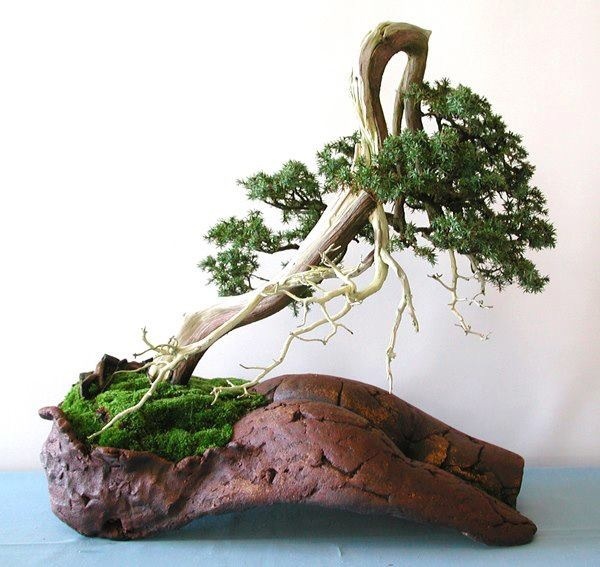
Bonsai are fabulous, aren’t they! Those twisted, dwarfed trees, trained through the process of cutting the tap root and wrapping limbs in heavy wire, seem still to capture the beauty of natural process, trees compensating for wind and soil to continue living. When I was younger, I wanted to cultivate bonsai; I think, as the daughter of a psychiatrist, I saw in them a reflection of what I saw in people, in myself: stunted at the root, twisted by outside forces, yet profoundly beautiful for all of that.
Oh, youth! At some point, I began to realize the downside of those lovely contortions within me, and others. That there is a distinct difference between being shaped by life, and being twisted into a dysfunctional pretzel. As bizarre as it sounds to me, my body and spirit became comfortable with being uncomfortable, and when I decided to exercise free will in becoming healthier, THAT was when the pain started.
Oh, the pain! The highly unpleasant, even overwhelming effort it takes to mindfully address the impact of our family and societal influences, and grow instead out of our inner life force, can be daunting. It is natural to resist, to recoil.
People seek therapy ostensibly to address pain, yet truly for the most part simply to be rid of it. No, it’s o.k. It’s natural. If I could simply wave a wand over your head and thereby eradicate the rawness of every wound you’ve suffered and could not heal, I would. When I combined bodywork with psychotherapy, I think many of the clients who got on the table were hoping, as one client put it, to just “get the pain out of her!” As if my hands were energetic suction cups. Sadly, many of my clients have contorted their lives to avoid the unavoidable. Their jobs are beneath their capabilities because they are afraid to fail, or they live only for their jobs because they feel lost in exploring the world outside. They cling to relationships because they hate being abandoned, or are alone because they fear heartbreak.
Paradoxically, then, pain and the fear of it rule their lives.
This is part of a three-part series dedicated particularly to the difficult issue of pain. Next week: “Pain as Teacher”